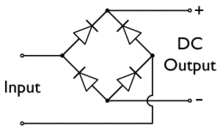First post, by brostenen
- Rank
- l33t++
Hi...
I have bought a modern C64 power brick a couple of months ago, and it induces noise to picture.
At first I did not notice, as I was using an old CRT television and composit cable.
It became clear to me, after I installed an Lumafix on my C64 in order to use a modern TV.
With the old power brick it has no noise at all. Yet I dare not to use it too much, because they
are old, and they will fail. Taking the C64 to the grave when they die. Not a question of if, a question of when.
The noise is a thick horisontal band of radio-noise, moving slowly from top to bottom.
Kind of when a tv had bad reception back when the tv-signal was analog.
Does anyone here know if it is the power brick that are bad, or if it might be too good for my
Commodore64's current state of health? Perhaps tired caps or something.
Thanks in advance...
Don't eat stuff off a 15 year old never cleaned cpu cooler.
Those cakes make you sick....
My blog: http://to9xct.blogspot.dk
My YouTube: https://www.youtube.com/user/brostenen
001100 010010 011110 100001 101101 110011
